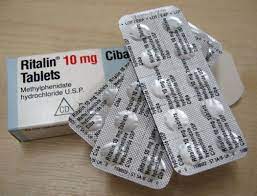What are the materials used for 3D printing?
The options and preferences of operating the printer are varied and depend on the computer being used, the operating system on the computer as well as CAD, CAM and printer control programs chosen. Plastic in 3D Printing In terms of raw materials that are put into the printing system to create the 3-D objects, there seem to be relatively few limitations on what can be used. Currently, plastics are the most widely used materials in additive manufacturing, and the important ones are listed below: ABS - acrylonitile butadiene styrene or 'lego' plastic – a very common choice for 3D printing PLA - polylactic acid – Is available in soft and hard grades, is becoming very popular and may overtake ABS in the near future PVA - polyvinyl alcohol – This is used as a dissolvable support material or for special applications. PC – polycarbonate – Polycarbonate requires high-temperature nozzle design and is in the proof-of-concept stage. SOFT PLA - polylactic acid – Is rubbery and flexible, available in limited colors and sources. As 3D printing spreads, may get easy to find. Metals Used to Print 3D Objects The Materials Science fraternity will also be very interested in 3-D printing for the range of possibilities involving metals. Some of the metals used in 3D printing include the following: Steel Stainless steel Titanium Gold Silver Other Materials Used to Print 3D Objects A range of other manufacturing materials can be used for 3D printing that include nylon, glass-filled polyamide, epoxy resins, wax, and photopolymers. As mentioned above, there appear to be few limits on what materials can be used for additive manufacturing. Some of the more unusual materials that have been used are detailed below: Chocolate – Material engineers have devised a way to use chocolate in 3D printers to obtain some delicious treats. With the help of computer-aided manufacturing systems found in 3D printers innovative designs can be developed with this delicious material. Bio-Ink - Biomedical professionals such as Anthony Atala are researching the use of materials such as bio-ink. Bio-ink comprises stem cells and cells from a patient, which can be laid down, layer by layer to form a tissue. Human organs such as blood vessels, bladders and kidney portions have been replicated using this technology. Bone Material - A research team headed by Dr Sushmita Bose from Washington State University printed a bone-like material comprising silicon, calcium phosphate and zinc. This bone-like material was integrated with a section of undeveloped human bone cells. In about a week, growth of new bone was seen along the structure. This new material dissolved eventually and did not harm the patient. Objet Digital Material - Objet has transformed the 3D printing world by introducing printers that can make use of several materials at the same time. These multi-jet printers can create fine models offering a range of textures, colors and attributes. These mixtures are referred to by Objet as digital material. Objet Tango Family - Objet has also introduced a rubber-like material that is probably the only one of its kind in 3D printing. Although it is not exactly rubber, it shows a lot of similarity to rubber. Hot Glue - A common hot glue gun was hooked up by designers to their CAM system and although hot glue may not be significant, the results if any obtained by hobbyists will truly be fascinating. Full Color Sandstone - This material enables the production of 3D printed creations with almost any color. Fine designs for action figures, architecture and character models are becoming highly popular with this material. It is even possible to print the human face on sandstone through 3D printing and the results are not that bad. Glass - Ground up glass powder is spread layer by layer, bonded with adhesive spray then baked resulting in 3D printed glass product. Medication - Engineers and doctors are working together to create 3D-printed medication. Medication need not be always purchased from pharmacies, the days are not far away when they can be printed!! Skin - Similar to bio-ink, 3D printers can help in skin regeneration. This could bring about a change in how patients receive treatment. If this technology truly develops, the potential for regenerative medical application will be tremendous. https://vexmatech.com/our-services.html

.png)









.png)